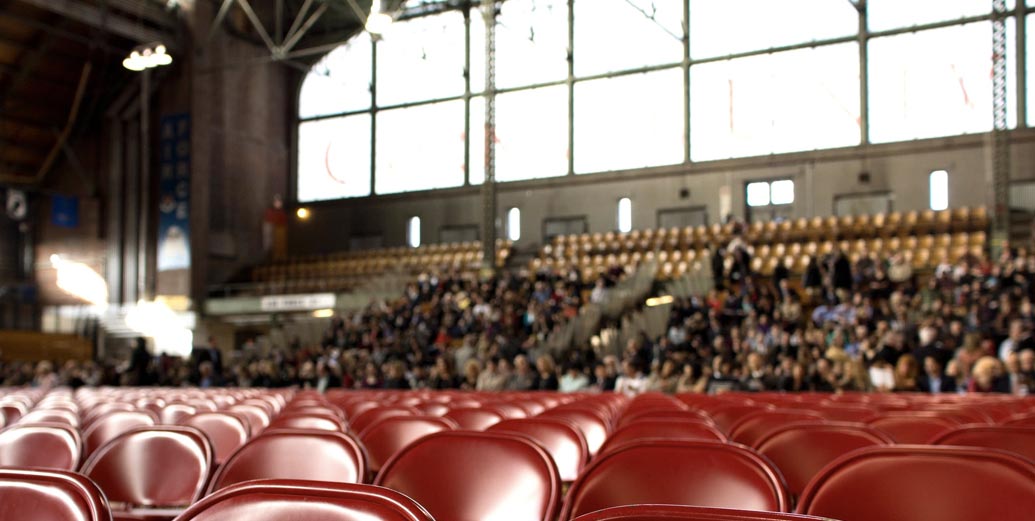My First Trade Show: A Guide to Success for First-Time Exhibitors
Exhibiting at a trade show can be a mind-boggling task – especially if you have little or no experience of event marketing.
Getting your first trade show wrong can be seriously damaging for your small business: with costs multiplying beyond control, valuable energy wasted and crucial business opportunities missed.
First-time exhibitors tend to fall into common pitfalls which can be easily avoided with careful planning. Whether it’s not budgeting correctly for the event or mismanaging your leads, putting in a bit of extra research before the show can help you avoid these exhibiting dangers and set your business on the right course for success!
Step 1: Choose the right show
Find out what the key event is for buyers and decision-makers in your target audience. You will need to research the other exhibitors as well as paying close attention to any possible rivals: you don’t want to have too many competitors at the event.
You shouldn’t just accept the stand position allocated to you by the event organiser; download the floorplan for the event and identify a space that will attract a lot of footfall.
Headline Stat: 80% of business owners agree that live events deliver better ROI than any other media.
Step 2: Work out your budget
For a successful show you will need to allocate a rough budget that relates to your expected ROI (return-on-investment).
You will need to consider the costs involved in every aspect of exhibiting at the event including transport to and from the venue; stand space cost; display stand purchase; marketing literature and accommodation – always leaving room for additional expenses such as food, drink and entertainment which may crop up along the way!
Interesting Fact: A recent study found that B2B exhibitions account for 39.2% of B2B marketing budgets.
Step 3: Choose the right exhibition stand
Firstly, you will need to find out whether you have a shell-scheme or space-only exhibit at the event as this will help you choose the type of display stand required. After this you should work out the dimensions of your space and find stands that fit comfortably within the space.
Smaller shell-scheme spaces will simply require a banner stand and/or pop up display with an optional literature rack whereas larger space-only stands will require either a completely custom-built exhibition stand or a modular exhibition system.
Interesting Fact: The average attendee spends 8.3 hours viewing trade show exhibits at a show or exhibition.
Step 4: Design an eye-catching stand
You need to think carefully about who will design your exhibition stand: you can do this in-house with a design template or ask your stand supplier. Whoever you choose to design the stand, make sure it is bold and engaging with bright colours and unique branding.
The design of your stand should be as simple as possible and be used to attract attention rather than give detailed company information. It should give an instant impression of your company’s purpose with more detailed information contained in marketing literature.
Interesting Fact: 83% of exhibitors agreed that “Building, expanding brand awareness” is a high-priority marketing-related objective for trade shows.
Step 5: Attract People to Your Stand
It is a good idea to think of a unique giveaway, competition or game that will lure visitors onto your stand. You can promote this competition using social media, making sure you use the show’s hashtag on Twitter.
As well as making sure your staff attract visitors onto your stand, ensure they are also well-briefed on how to qualify leads and sell your products/services. Get your team to collect as much information as possible from each lead: this will help you to make your follow-ups more personal and relevant!
Interesting Fact: 81% of directors agree that the average order value with human interaction is over 15 times greater compared to other media investment.
Step 6: Follow-Up Your Leads
It’s a good idea to send out an initial generic email follow-up to all your leads, then call the ‘warm’ leads within a week of the show. With your follow-ups, try to use the same sales rep who took the initial lead, this should help with rapport and creating a better relationship with the prospect.
If you don’t close a lead after the show, don’t get just forget all about them – the sales process may take up to a year or more. Keep your business at the forefront of the prospect’s mind by subscribing them to your newsletter or connecting with them on Linkedin.
Interesting Fact: 44% of exhibitors don’t measure their return on investment from an event
About The Author
Mark Peters is a content writer at Display Wizard, a UK-based supplier of display and exhibition stands that helps companies around the world exhibit at trade shows in Britain.
Source: business-achievers.com




